I am so glad you're here! This is my little corner where I get to share some of my most favorite images from engagements, weddings, births, my travels and my own little family from time to time. Hang out, look around, and please reach out to say hello!
explore:
welcome to my
home on the web
Weddings
births
Engagements
Families
If you’re a photographer – of any sort – light can be your best friend or your worst enemy. Which is why it’s so important to learn what it is, how it works, and how you can harness it when needed! I’m mostly a natural light photographer meaning I prefer to shoot outside on beautiful days and preferably during the golden hour (an hour or so before sunset). But that doesn’t always happen, especially on wedding days!
I remember when using light for photographs actually clicked with me… I was in the south of France at a workshop with National Geographic and whatever it was that Catherine, our instructor said, it all just made sense! Granted, I’ve still been learning a lot over the last several years and will continue to do so. It’s mostly been from trial and error, but it’s also been from other photographers like Jasmine Star, Katelyn James, Matt Kennedy and SO many others.
But what I realized fairly early on in shooting weddings was that I needed and wanted to learn off-camera flash (OCF). It gives the most natural looking photos when having to use flash and I just love playing with it and continuing to learn it!
Here you can see my basic set up from Emily and Adam’s wedding… I have my OCF on a stand, usually close to where the DJ’s speakers are, and sometimes will put a white umbrella on it to help diffuse the light. In the photo on the right, you see the result of that set up. Except that I also have a flash ON my camera to create fill light. If I had not had that flash also, Emily’s face wouldn’t have been lit up, it would have been in more shadow. Do you see her hair and her shoulder where the light is hitting it? It’s really bright in certain spots, but then the closer you look towards her eyes, you see that the light falls off and creates some shadow. That’s where the fill light from my on camera flash comes in. It’s not nearly as powerful (and I don’t want it to be!), but it allows you to still see her face.
50mm lens, ISO 800, f2.5, 1/200
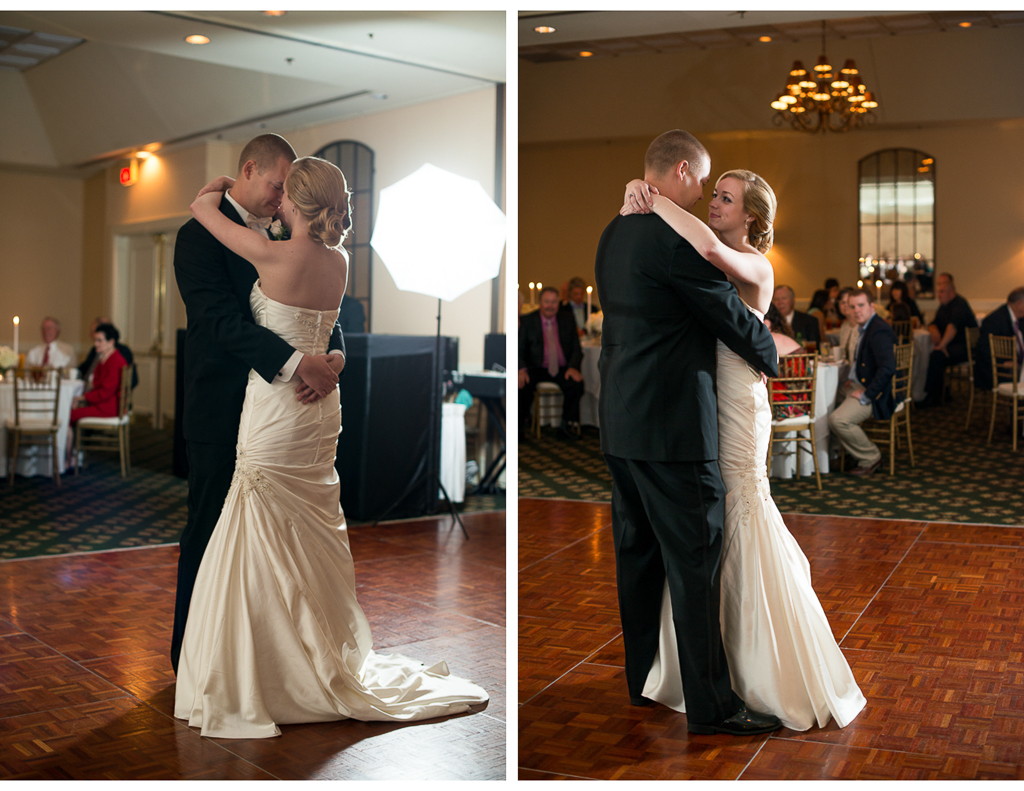
And here is what I have on my camera: SB900 (set around 1/16 power) and a PocketWizard II. There is another PocketWizard on the OCF that allows them to talk to each other and fire at the same time. I always have my flashes set to manual so I can control how much light they’re giving off. I generally have them set around 1/16, but depending on the size of the room or what we’re shooting, I have the ability to increase or decrease the amount of light it’s giving off. Also, shooting at 1/16 power actually saves my batteries and I rarely have to change them during the reception.
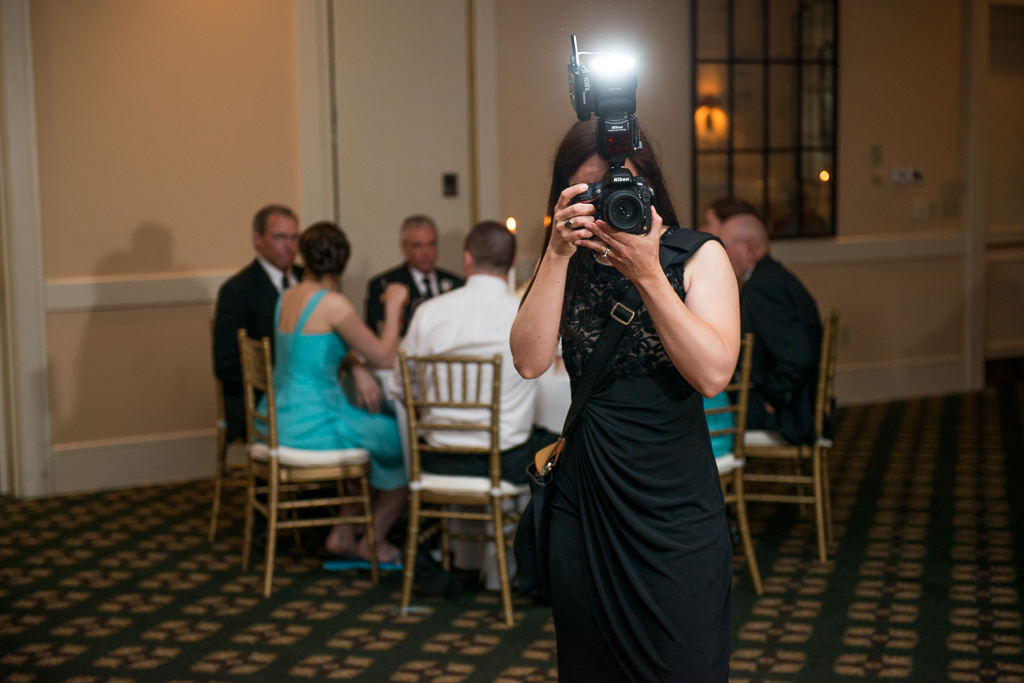
Another way I use OCF is in circumstances when a room doesn’t have enough light. Generally for detail shots I can find a window or a location that has enough light. And in the case of Bess’s dress from last weekend, I could have moved the dress somewhere else, but this room and the armoire just fit! There was a little bit of light coming in the windows, but this room was on the back of the house and shaded by trees so there wasn’t a lot of natural light. The image on the left was ok and when editing, I was able to lighten it a fair amount and then desaturate the dress to make it look as white as it really was. But I like to get my photos as close to perfect as possible IN camera so my editing time is next to nothing. So, when I added some light from an OCF over on the side (no flash on my camera), it gave me the shadows I wanted, saved me from having to desaturate the dress, AND I didn’t have to stay as still with my camera. With shutter speeds below 1/200, I always try to be super careful with how much I’m moving. But with a flash, the light freezes the image and you can take your shutter speeds lower.
Left photo: 50mm lens, ISO 1250, f2.0, 1/160 Right photo: 50mm lens, ISO 400, f2.5, 1/160
OCF set to 1/128 power
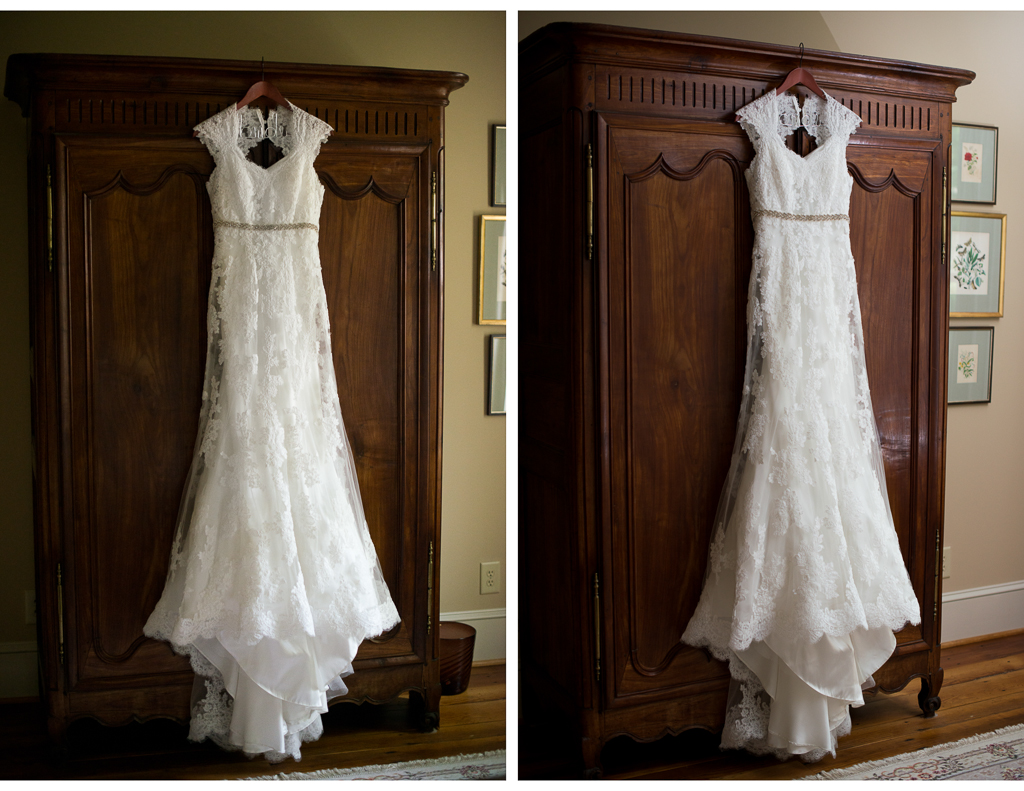
Finally, some of my favorite night shots! I LOVE getting to do these! Especially when different elements allow for some interesting backgrounds (like lampposts, snow, and lights hanging across the street!).
With both of these, I set one light behind the couple on a stand and with a PocketWizard. That flash was probably set at 1/16 power. The other light, also with a PocketWizard, is off to my right and a little behind me being held by Ben :-) That flash has a small softbox on it to diffuse the light and keep it soft on the couples’ faces. We generally start at 1/16 power but depending on the situation, we either increase or decrease that power. Unfortunately, I can’t remember what we ended up with for either of these photos, but the look of the final image changes with that light so play around with it and find what works for you!
On my camera, I only had a third PocketWizard so that both lights would fire when I clicked the shutter. In post, I think the only editing I did to both of these was to lighten them just a touch and add my personal pre-set that boosts the contrast and the shadows a bit.
Kristin & David: 50mm lens, ISO: 1600, f2.0, 1/160
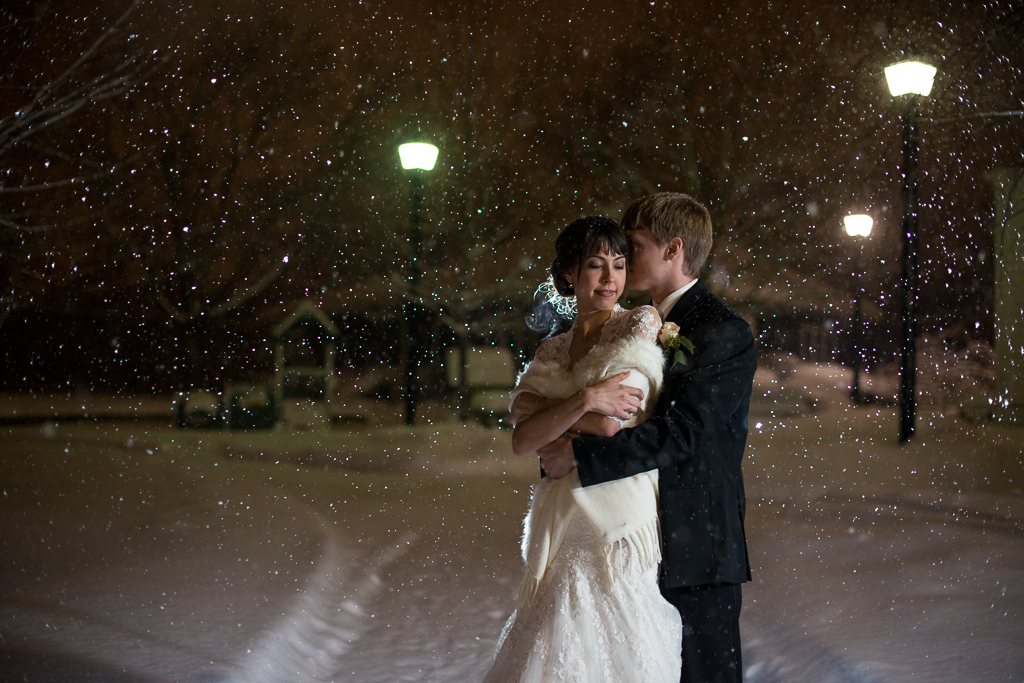
Kristi & Davis: 50mm lens, ISO 1000 (although I could/should have gone up to 1250!), f2.8, 1/160
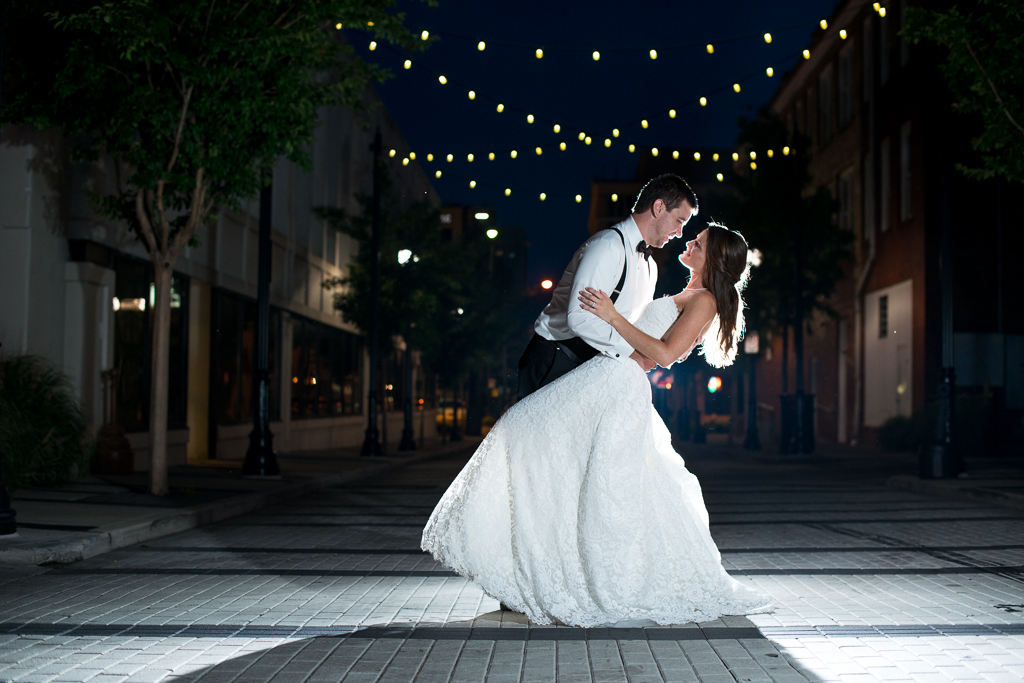
I hope this helps with off camera flash just a bit. Yes, it’s intimidating at first, but once you get your flashes and triggers (PocketWizards, Cyber Synchs, and Cannon’s newest flashes even have these built INTO them so you don’t have to purchase extra gear!) and start practicing, it gets much easier and less scary! If you have any questions, leave them in the comments and I’ll do my best to answer them!
Happy Friday!
As you set up that photo you told us to stand in from of the flash and then–in jest–to face the flash and then look directly into it. I remember David and I both did so without even thinking–by the end of that day we were so conditioned to do whatever you said. Haha :)